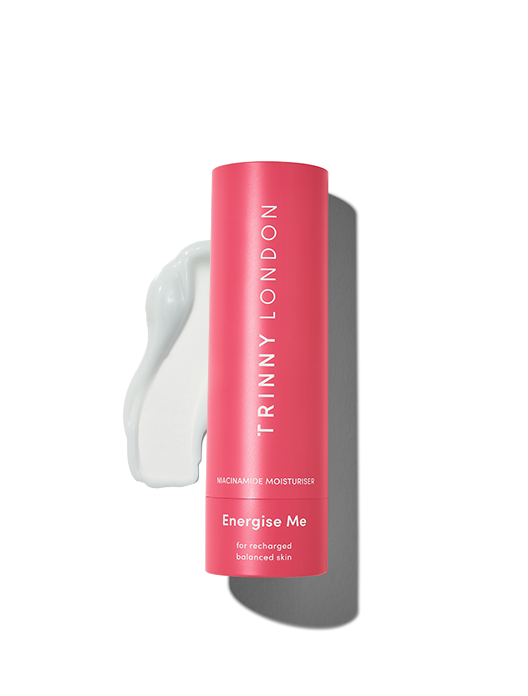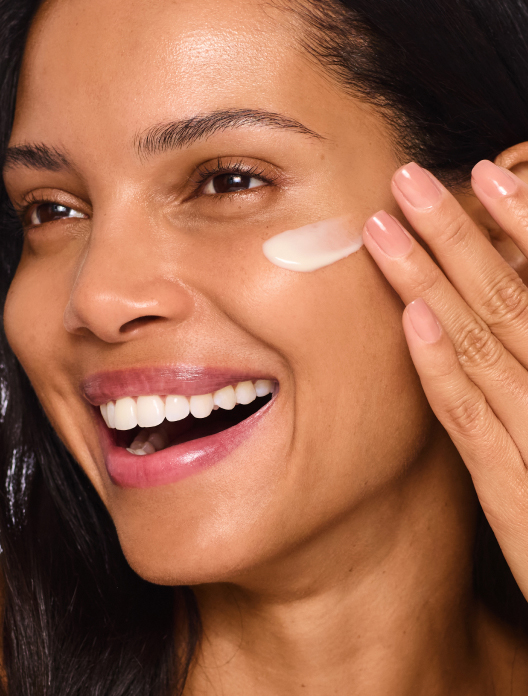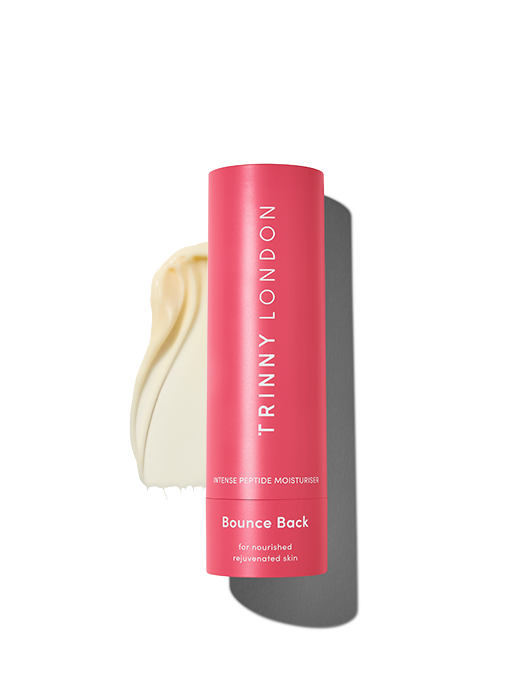

Energise Me
Niacinamide moisturiser for clear, energised skin, suitable for normal to oily skin

Imagine going through an entire day without a sip of water. You’d feel pretty parched, right? Our skin is exactly the same, and needs moisturiser to help it cope with everything it goes through and is exposed to in a day – things like whipping winds or UV exposure. A good moisturiser will act as a barrier cream, helping to shield the skin and preventing much-needed moisture from escaping. It’s a little bit like an umbrella, sitting atop the skin and keeping it protected. A sophisticated moisturiser will go a step further, delivering active ingredients into the skin to help you reach your skin goals. It might contain peptides to plump, or niacinamide to help balance oil.
Without moisturiser, dry skin (which is characterised by a lack of oil in the skin) can become aggravated, with feelings of itchiness and the appearance of flakiness amplified. Oily skin can suffer too, as although it has a surplus of oil, it may be lacking in water. Dehydration shows itself as dullness or a feeling of tightness in the skin, and tends to be most common around changes in weather or seasons.
“You should moisturise every morning and every evening,” says Skin Expert and Pro Facialist Fiona Brackenbury. “I would only caveat that by saying that during the day in the summertime, if you feel that your SPF is giving you enough moisture then you absolutely could forgo moisturiser if you wanted to. Just make sure that your SPF is going to give you everything you need.” For example, an SPF might be enough to create a barrier on the skin and deliver UV protection, but it won’t necessarily have active ingredients to help take your routine to the next level.
Consistency is key to good skin, and a once-in-a-blue-moon approach to applying moisturiser isn’t going to give you the results you’re looking for. If you don’t like the way moisturiser feels on your skin, or find it causes your foundation to bobble or pill, consider shopping around for a different formula and leaving a gap of at least 10 minutes between your moisturiser and your makeup.
The exact amount of moisturiser you need to use will depend on the individual, as not everyone’s faces are the same size. We advise using two pumps of our moisturisers to cover your face, neck and décolleté. Aim to use enough moisturiser that your skin feels evenly coated, and you’re not having to work to spread the product too thinly. Equally, if you’re finding that you’re using so much product that it’s sitting on top of your complexion, or proving difficult to rub that quantity of moisturiser into your skin, use less.
When it comes to how much moisturiser you’re using, the phrase “you can have too much of a good thing” is pretty apt. Although, it’s not that using far more moisturiser than advised (in terms of how often and how much you apply) is bad for your skin. Rather, going overboard simply isn’t going to make much difference to the overall health of your skin. Using double the amount of moisturiser doesn’t equal double the results, and ultimately means you’re wasting product.
“I would say, unless you have really dry skin, then it’s not necessarily going to be advantageous to put more moisturiser on throughout the day,” says Fiona. You’d have your SPF on as well, so would need to consider that when reapplying moisturiser too. But, what you do need to do is make sure you’ve got the right moisturiser that’s working hard for you, so you don’t need to add more. If your skin is parched, thirsty and dry then I would say that your skin barrier is compromised and therefore you need to look for a moisturiser that strengthens this.” If you feel you need to apply your moisturiser more frequently than twice a day to get the results you’re after, it’s time to try a different formulation.
At the opposite end of the spectrum are those with oily skin, who are more likely to apply too little moisturiser. If you tend to avoid moisturiser on the basis that you either don’t like the way it feels or don’t think your skin needs it, then it’s worth re-considering your stance. “Moisturisers can strengthen the skin barrier and limit water evaporation so it’s really important for all skin types,” advises Fiona. “Those with oily skin should look out for a lightweight gel moisturiser.”
Closely linked to the relationship between oily skin and moisturiser is the question of whether using too much moisturiser can cause spots. Spots, like blackheads and whiteheads, form when dead skin cells and oil block a hair follicle. This congestion is more likely to occur on oily skin than dry, as there’s more oil present on the surface.
“You can get the wrong moisturiser, and that can cause breakouts,” explains Fiona.”It’s not that you were moisturising too much, it’s because of the ingredients in that moisturiser. Maybe it was too rich, or maybe it wasn’t right for your skin type.” For example, if your moisturiser is very thick, cosseting and oil-based, then there is more chance of a blockage, as you’re adding more oil into the equation and creating a film that prevents dead skin cells from leaving your skin. “You can’t moisturise too much but you definitely can moisturise with the wrong product.”
Shop the article


Niacinamide moisturiser for clear, energised skin, suitable for normal to oily skin


Intense peptide moisturiser for plump, bouncy skin, suitable for normal to dry skin